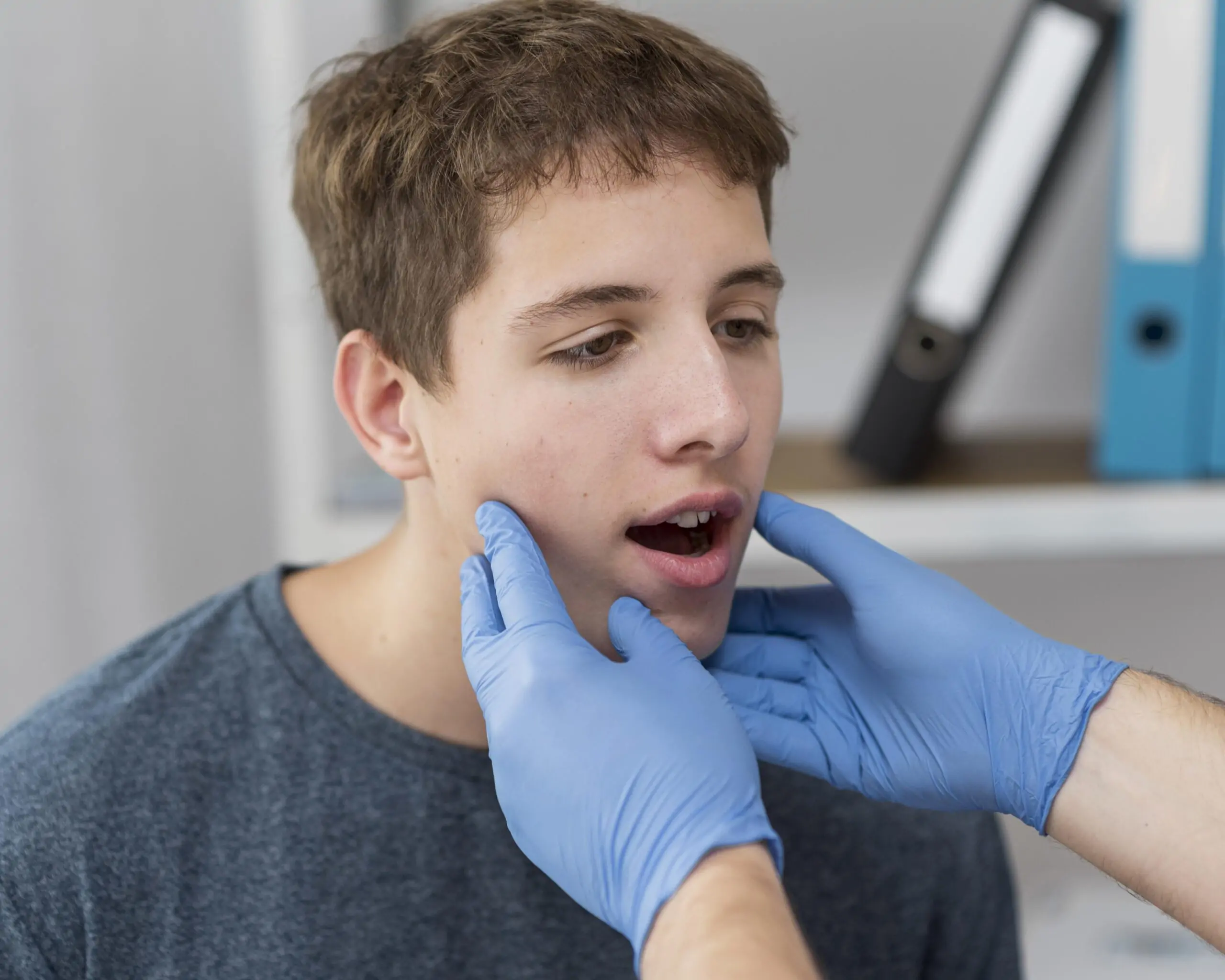Overbite Jaw Surgery Before And After: Real Transformations And What To Expect
Do you find yourself wondering about the big changes people experience with overbite jaw surgery before and after? It's a question many folks have when thinking about fixing their bite. An overbite, which is when your upper teeth sit too far over your lower teeth, can cause more than just a smile concern. In a way, it can affect how you chew, how you speak, and even how your face looks.
This common dental issue, sometimes called a Class II malocclusion, happens when the upper jaw and teeth overlap the lower jaw and teeth more than they should. While a little bit of overlap is quite normal for how our teeth work, too much can lead to some real problems. For many, understanding this condition is the first step toward feeling better and having a more comfortable mouth, you know?
For some, simple fixes like braces or clear aligners can help. But for others, especially those with a jaw structure issue, jaw surgery might be the best path. This kind of surgery, also known as orthognathic surgery, helps move the jaws into a better spot. We will look at what this whole process involves, from the very beginning steps to the amazing changes people see, and what it's like to live with a corrected bite. So, pretty much, let's explore the journey.
Table of Contents
- What is an Overbite, Anyway?
- When is Overbite Jaw Surgery Considered?
- The Journey to Jaw Harmony: Before Surgery
- The Surgical Experience
- Life After: Overbite Jaw Surgery Before and After Transformations
- Recovery and Beyond
- Common Questions About Overbite Jaw Surgery
- Taking the Next Step for Your Smile
What is an Overbite, Anyway?
An overbite, to put it simply, is a vertical misalignment of your teeth. It happens when your upper front teeth overlap your lower front teeth more than they should. While a little bit of overlap is typical for proper dental function, an excessive overlap is what we call an overbite. This is, you know, a very common orthodontic issue that many people have.
Understanding the Overlap
When we talk about an overbite, we are looking at how your upper and lower teeth meet when your mouth is closed. If your upper teeth cover a big part of your lower teeth, that's an overbite. It can be caused by many things, including genetics, habits like thumb-sucking in childhood, or even jaw development issues. So, it's pretty much about how everything lines up, or doesn't, actually.
Why Does it Matter?
Left untreated, an overbite can cause a few problems. It can lead to unusual wear on your teeth, jaw pain, and even difficulty chewing certain foods. Some people might also experience speech issues or discomfort in their jaw joints. In some cases, it can also affect the overall appearance of your face. So, it's not just about how your smile looks, but also about how your mouth works, you know?
When is Overbite Jaw Surgery Considered?
Many people with an overbite can find help with braces or clear aligners. These tools work to move teeth into better positions over time. However, there are some cases where these methods alone aren't enough to fix the problem. This is when a dentist or orthodontist might start talking about jaw surgery. It's usually for those situations where the problem is more about the jawbones themselves rather than just the teeth. So, it's about finding the right solution for the specific issue, really.
Beyond Braces and Aligners
Braces and aligners are great for moving teeth. But if the upper jaw is much bigger than the lower jaw, or if the lower jaw is too far back, moving teeth alone won't solve the core issue. This is where corrective jaw surgery, also called orthognathic surgery, comes into play. It helps change the structure of your jawbone, bringing your upper and lower jaws into a proper alignment. This is, in fact, a very important distinction to make.
Identifying Severe Cases
Extreme cases of skeletal overbites, where the jaw structure itself is out of balance, often need surgery. Signs that surgery might be a good option include major difficulty chewing, ongoing jaw pain, mouth breathing, or an inability to close the lips comfortably. If your orthodontist has suggested jaw surgery, it's because they see a jaw condition that braces alone cannot fix. Often, you also have braces on your teeth before the surgery to get your teeth ready for the new jaw position. This is, you know, a pretty common path for people.
The Journey to Jaw Harmony: Before Surgery
Deciding to have jaw surgery is a big step, and it involves careful planning. It's not something that happens overnight; it's a process that usually takes quite some time. The journey starts with a lot of talking and looking at your specific situation. This planning helps make sure everything goes as smoothly as possible and that you get the best outcome. So, it's a bit like preparing for a big project, really.
Initial Consultations and Planning
Your journey usually begins with visits to both an orthodontist and an oral and maxillofacial surgeon. These two professionals work together to figure out the best plan for you. They will take detailed measurements, X-rays, and sometimes even 3D scans of your face and jaws. This helps them understand exactly how your jaws are misaligned and what needs to be done. They will talk to you about what to expect, the benefits, and any risks. This is, arguably, the most important part of the whole process.
Braces and Preparation
Before the surgery, most people will wear braces for a period, often for several months or even a year or two. The braces are used to move your teeth into the right spots so they will fit together perfectly once your jaws are realigned. It might seem a bit strange to have your teeth moving around before jaw surgery, but it's a very important step. For some, like one young man mentioned in "My text," braces were on before jaw surgery for severe malocclusion. This preparatory phase is key for the surgery's success. So, it's a bit of a waiting game, but a necessary one, you know?
The Surgical Experience
Corrective jaw surgery, also called orthognathic surgery, changes the structure of your jawbone to bring your upper and lower jaws into a proper relationship. This is a procedure done by an oral and maxillofacial surgeon. It's a big operation, but it's very common and has helped many people. The goal is to improve how your jaws work, how your teeth fit, and often, how your face looks. So, it's a really impactful procedure, actually.
What Happens During the Procedure
During the surgery, the surgeon makes cuts inside your mouth, so there are no visible scars on your face. They then carefully move parts of your jawbone into their new, planned positions. Small plates, screws, or wires might be used to hold the jawbones in their new spots while they heal. The surgery itself can take a few hours, depending on what needs to be done. This is, in fact, a very precise operation.
Upper, Lower, or Both?
Jaw surgery can involve the upper jaw (maxilla), the lower jaw (mandible), or sometimes both. When both jaws are operated on, it's called double jaw surgery. For severe overbites, moving both jaws is often necessary to achieve the best results. One patient mentioned experiencing mouth breathing, dry mouth, jaw pain, difficulty chewing, and an inability to bite, which led them to double jaw surgery. The type of surgery chosen depends on your specific jaw misalignment and what your surgeon and orthodontist decide is best for you. So, it's very much a personalized approach, you know?
Life After: Overbite Jaw Surgery Before and After Transformations
The moment people often look forward to the most is seeing the "before and after" changes from overbite jaw surgery. These transformations can be quite amazing, affecting not just how a person's bite works but also their facial appearance and overall quality of life. The outcomes showcase the truly big effects of this type of surgery. It's, in a way, a fresh start for many.
Visual Changes and Facial Balance
One of the most noticeable changes after overbite jaw surgery is the improvement in facial harmony. When the jaws are brought into proper alignment, it can make a person's face look more balanced and pleasing. This can mean a stronger chin, a more defined jawline, or simply a face that feels more "right." The before and after results, like those shown by Dr. Burak, often show remarkable enhancements in facial balance. This is, pretty much, a big part of why many people consider the surgery.
Improved Function and Comfort
Beyond looks, the main goal of overbite jaw surgery is to improve how your mouth works. This includes making it easier to chew food, speak clearly, and even breathe better. People who struggled with jaw pain or discomfort often find great relief after the surgery. Being able to bite into an apple or enjoy a meal without pain is a very big deal for many. So, it's about feeling more comfortable in your own skin, literally.
Speech and Breathing Benefits
For some, a severe overbite can affect speech, making certain sounds difficult to pronounce. Jaw surgery can help correct tooth malalignment and improve speech function. Also, issues like mouth breathing, which can happen with certain jaw positions, often get better after surgery. One person mentioned that mouth breathing was a reason they had double jaw surgery. These improvements can lead to a much better quality of life. This is, you know, a frequently overlooked benefit.
Patient Stories and Outcomes
Looking at real patient stories gives a good idea of what to expect. People share their progress pictures, like one person on a recovery forum who had double jaw surgery and shared their journey. Another update showed "2 years post lower jaw overbite surgery before and after." These stories often highlight not just the physical changes but also the emotional journey and the relief of living without the issues caused by a severe overbite. It's quite inspiring to see these transformations, actually. You can often find many such stories and photos on sites like Realself, where doctors share patient results, or on community forums dedicated to jaw surgery recovery. This provides a very real look at the process. Browse jaw surgery before & after photos shared by doctors on realself.
Recovery and Beyond
After overbite jaw surgery, there's a period of healing and recovery. It's a journey that takes time and patience, but the end results are often well worth the effort. Knowing what to expect during this time can help you prepare and feel more at ease. So, it's a bit like running a marathon; you need to pace yourself, you know?
What to Expect Post-Surgery
Right after surgery, you'll likely experience some swelling, discomfort, and perhaps some numbness in your face. Pain medication will help manage any pain. You'll be on a liquid or very soft diet for a while, and talking might be a bit difficult at first. Your surgeon will give you clear instructions on how to care for your mouth and what activities to avoid. This is, arguably, the most challenging part for many people.
The Healing Process
The initial swelling usually goes down quite a bit in the first few weeks, but full healing takes several months. During this time, your jawbones are fusing in their new positions. Your orthodontist will continue to work with you, often adjusting your braces to fine-tune your bite. It's a gradual process, but each day brings you closer to your final result. This is, in fact, a testament to the body's ability to heal.
Long-Term Results
The goal of overbite jaw surgery is to provide lasting improvements to your bite, facial balance, and overall well-being. Once your jaws have healed and your braces are off, you'll enjoy the benefits of a corrected bite. This includes easier chewing, better speech, and a more comfortable jaw. The results, as seen in many "before and after" cases, can be truly life-changing, offering significant enhancements in facial harmony, bite function, and quality of life. This is, you know, what everyone hopes for.
Common Questions About Overbite Jaw Surgery
Many people have questions when they consider overbite jaw surgery. Here are some common ones that come up, you know, quite often.
1. Is overbite jaw surgery painful?
While there's discomfort right after surgery, pain is managed with medication. Most people report that the recovery is more about discomfort and swelling than severe pain. It's a bit like a deep ache that gets better each day, actually.
2. How long does recovery from overbite jaw surgery take?
Initial recovery, where swelling goes down and you can return to some normal activities, usually takes a few weeks. However, full healing of the jawbones can take several months, sometimes up to a year. It's a rather gradual process, you know?
3. Will my face look different after overbite jaw surgery?
Yes, your face will likely look different, usually in a good way. The surgery aims to bring your jaws into better balance, which can improve your facial profile and harmony. This is, in some respects, a major reason many people choose to have the procedure done.
Taking the Next Step for Your Smile
Seeing the dramatic overbite jaw surgery before and after transformations can be truly inspiring. If you're struggling with a severe overbite and are curious about your options, talking with a dental professional is your best next step. An orthodontist can help figure out if braces, aligners, or jaw surgery is the right path for you. They can explain what causes an overbite, the different types, and how early dental care can help. Learn more about overbite correction on our site.
Corrective jaw surgery, when needed, can resolve a range of conditions that affect the jaw, face, and teeth by moving the jaw into a better spot. It's a big decision, but for many, it leads to a lifetime of better chewing, speaking, and feeling good about their appearance. So, if you have questions, please ask away, as a matter of fact. You can also learn more about orthognathic surgery and what it involves.

Transform Your Smile: Before and After Jaw Surgery Overbite

Transform Your Smile: Before and After Jaw Surgery Overbite

Transform Your Smile: Before and After Jaw Surgery Overbite